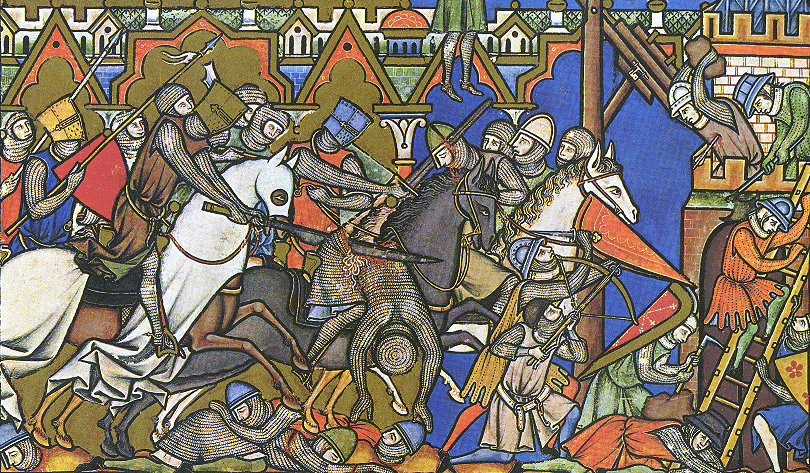The old-fashioned US style is to pad the weapon heavily, and hit heavily. However, some of them are now moving towards narrower weapons that they hit more lightly with.
The UK style is to have quite heavy, thickly latexed weapons but to almost entirely pull your blow so that you only hit with a light tap. Basically pulling your blow involves reducing the momentum of the weapon at the last moment, so that it looks like a full blow as it approaches but hits very lightly. Takes some practice.
The style here in Auckland is somewhere in the middle, but closer to UK style. If you’ve acquired some Ex-Caliber weapons, they are rather softer than most UK latex weapons. So you can hit with a fairly firm tap and still not feel much, which is what we tend to do here. In the thick of a big combat people sometimes hit moderately hard, and it’s usually not an issue. No worse than a momentary sting that subsides in a few seconds, certainly no bruising.
The other questions are what locations you’re allowed to hit, what types of strikes are allowed, and how fast you can hit.
Most larps here have a “no head shots” rules, so hits to the head are avoided OOC and do no damage IC. This is partially because of concern over being hit in the eye, partially because being hit in the head is more unpleasant than being hit elsewhere, and partially (at least for me) because regular head impact can cause closed head injury, which has an incremental effect on the brain, even if the head blows don’t bother the person. Soccer players and boxers appear to be more prone to Parkinsons because of this, and I’d hazard that SCA players run this risk. In the UK head shots are sometimes allowed because people think that otherwise the “invulnerable” head would be used as a shield. Believe it… or not. Never seen that happen here. Hits to the genitals and/or breasts are sometimes also discouraged.
Latex weapons are usually not intended for thrusting. Thrusts to sensitive areas, for example in the armpit or that glance upwards into the face, can be painful. But more important, thrusting with most latex weapons gradually damages the tip, and in the worst instance the core could come loose and protrude from the foam. In which case you really wouldn’t want to be thrusted at with it. My advice is only thrust if there’s no other blow available, do so lightly (relax the elbow and don’t follow through, instead let the blade angle to one side - this is a technique used by metal weapon fighters). Also, check the tip of your sword now and then to make sure it’s intact.
You can feel if the core is approaching the surface of the tip by squeezing and manipulating it gently. Don’t manipulate it hard, as that can damage it. The tip is usually the first part of a sword to go because it takes the brunt of impacts, and needs to be checked before every game. For the same reason, don’t lean on your sword with the tip on the ground. If you lean it against a wall, rest it on the pommel.
Some weapons such as spears and arrows are built especially to be safe for stabbing. The construction process is to put a stopper on the end of the core, something like a metal coin, to stop the core coming through. Then layer dense foam (closed-cell foam, like camping mats but often denser) over that. Then layer soft foam (open-cell foam, which is upholstry foam) as the outermost layer. On impact, the soft foam absorbs most of the momentum, then the harder foam absorbs the rest, so hopefully the core doesn’t press too hard against the stopper.
In terms of how rapidly you strike, most games have some rule to stop people tapping rapidly. It’s unrealistic for most weapons, and not much fun to fight against. Such rules vary from just saying “don’t do that, it’s lame” and saying only the first blow in a flurry counts which is the usual approach taken here in Auckland, to requiring players to draw their weapon back 90 degrees between strokes or to hit different areas in turn, to only allowing 1 strike to count per second. Personally I find just discouraging it and telling people only the first blow counts works fine.
In terms of general combat rules, bodily contact is usually not allowed. So no pushing, tripping, grabbing, etc. Same goes for pushing against someone with your shield. This is to stop people being knocked down or getting overexcited and hurting someone. Only hit people with your foam weapon. You might have noticed at Camelot that Derek and Vanya (Gawaine and Lancelot) were clashing quite heavily with their shields and pushing against each other, but that was by mutual consent and it’s not the norm here.
Shields make a huge difference in combat. Best to pad the edges so people don’t get accidently knocked by them. My shields are actually made entirely of foam, which is fairly common in the UK. They latex over the top of them, Bryn can show you examples of that. In fact, doing some fighting with Bryn will teach you all this stuff in a much more practical fashion.
Your best bet is to have a bit of a play with the weapons, do some duels, then some group vs. group fights. Fighting in a larger combat, in the dark, or in a desparate IC situation is quite a different experience to a casual duel, and requires more care. Have fun. Personally I love a good combat, and I’ve had the most unexpected people enjoy fighting with those Ex-Caliber weapons - my workmates, my parents. It’s clearly pretty easy, and those are good starter weapons because they’re quite soft.




